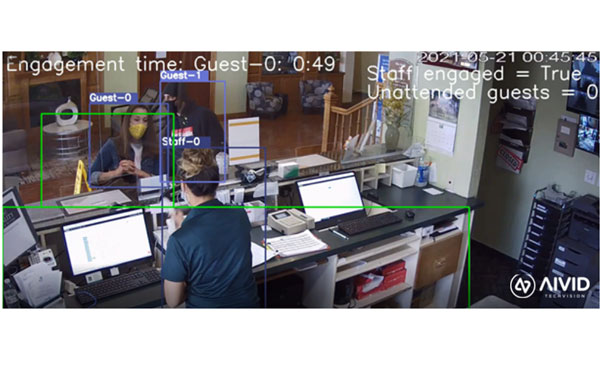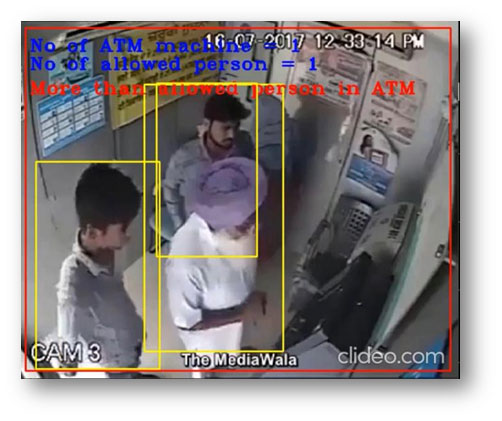
Video analytics is a broad term that basically boils down to video surveillance data being used for real-time analysis of video data. As security and business efficiency both become increasingly important, it’s unsurprising that the use of video surveillance continues to grow.
However, legacy solutions can be really inefficient with complexities and the false alerts they generate. In this scenario, the technology is not effective and gets in the way of security efforts.
Traditional Video analytics systems categorize the objects captured in the frame based on a pre-existing set of rules calibrated manually, anything that does not fit into these rules will get incorrectly categorized. While an effective approach in some situations, this technique became impractical given the number of cameras that had to be manually added or removed by configuring rules.
The recent advancement in computing has made deep learning AI-based video analytics solutions more reliable and feasible, let us understand what it means.
What is AI & Deep Learning-based Video Analytics?
AI-based video analytics is a technology that is specifically designed for understanding cognitively the content in videos. Also sometimes referred to as “video intelligence” for making automated decisions in real-time analyzing video data. This allows organizations to make quick decisions about what action needs to be taken without needing human intervention.

Video analytics based on deep learning has created a paradigm shift in video analysis. Deep neural networks allow for intelligent video analytics that mimics humans while training, over a vast dataset and can actually learn as it is exposed to more objects over a time frame.
It all started with basic computer vision techniques (e.g. triggering an alert if the camera image changes too much or gets dark) and now we have systems that can identify objects and their path in the image as well and allow organizations to make quick decisions about what action needs to be taken without needing human intervention.
Evaluating Key Challenges faced with Traditional Solutions
1. Challenging Installation and False Alerts
Let’s address the complexity of setting up the camera and syncing it with your phone. The hardware installation can be challenging. But, sometimes, even the software setup process has friction. Let’s assume that somehow, you are able to install the camera and sync it with your phone. That exposes you to a different problem – data storage and spam alerts.
Most IP camera security solutions rely on motion capturing to avoid the 24 x 7 x 365 data recording and storage problem. The idea is simple – the technology calculates the number of pixels that have changed between each frame to determine whether there is motion worth capturing or not. The underlying technology is fascinating, but the application is underwhelming at best. Pixels can vary because of multiple reasons that should not contribute to security risks.
For instance – the frame might have a flying bird, fog, rain, etc. The technology is called ‘motion detection’ and not ‘object detection’. Hence, since there is no classification between harmful and regular objects, your phone gets an alert whenever the camera detects minute changes. This leads to spam alerts. Some users might even get frustrated and dismantle the system, making the entire solution pointless.
Some security solutions have tried to solve this problem by letting you change the sensitivity of the camera’s motion detection capabilities. But, that still does not solve the problem as the camera can send tens, if not hundreds, of false alerts daily.
2. Insufficient Data Analysis
Enterprise security solutions using video analytics took a step ahead and tried to solve the classification problem. Many of these systems can differentiate between objects and people in motion. They create boxes highlighting the form of an object and hence try to ‘recognize’ the object. The vertical boxes represent humans, and the horizontal boxes represent other objects. After the motion is detected, these boxes recognize what is going on in the frame. This way, the speed, direction, and movement uniformity are captured.
While ‘recognize’ is the term used across the industry, most such systems classify the object into people, vehicles, etc. And this difference becomes critical when the form of an object does not confine to the classification rules used in the system.
For instance – most such systems have limits on the height and width of the object for it to be classified as an object and not a human being. How would this system respond to someone carrying an umbrella or a heavy object on his head? The individual will probably not be recognized as human and will instead get ‘classified’ as an object. And this poses a significant challenge because even if the classification library is updated frequently, the system can never be equipped to classify every shape & form that exists in our environment.
The principle is simple – whatever comes in the frame is either an object or a human being. But, that idea is not enough to secure your premises. Anything that does not fit into the confined definition of humans and objects will get mislabelled.
How is Computer Vision Solving This Problem?
AI & Computer vision with the advancements on deep learning fix the ‘categorization vs. recognition’ problem and make technology adaptive.
With AI BOTs that are trained on specific activity across thousands of multiple datasets variants, achieve a higher degree of accuracy. Based on this training, the model recognizes animals, people, and other objects in motion and rest. The density and diversity of the dataset ensure that the algorithm does not have a narrow definition that would make it categorize everything in the frame, nor does it have a definition so broad that it would send an alert every second.

AIVID BOTs use deep learning technology. Deep learning is the closest technological equivalent of how the human brain functions. The human brain uses neural networks to learn and understand changes in the environment. Similarly, a deep learning system uses thousands of layers of hierarchical neural networks to sense, understand, and filter the smallest but statistically significant deviations in a frame while keeping room for some natural changes. This increases the probability of detecting useful patterns as an output of the process.
Conclusion
Traditional systems are plagued with narrow range classification, expensive setups, accuracy issues, and bandwidth over consumption. AIVID offers a ready-to-deploy platform that seamlessly integrates with your existing IP Cameras to detect objects and motion in the frame with the capabilities of AIVID BOTS, our Deep learning models trained to detect specific activities and send out alerts in real-time.
You can also run one-click security and activity-compliance inspections across multiple locations. And all of this can be controlled with an easy-to-use cloud-based operations portal for managing the BOTS, security checklists, and per-defined activities.
To learn more about how AIVID can help you get more secured premises and greater efficiency request a demo at info@aividtechvision.com